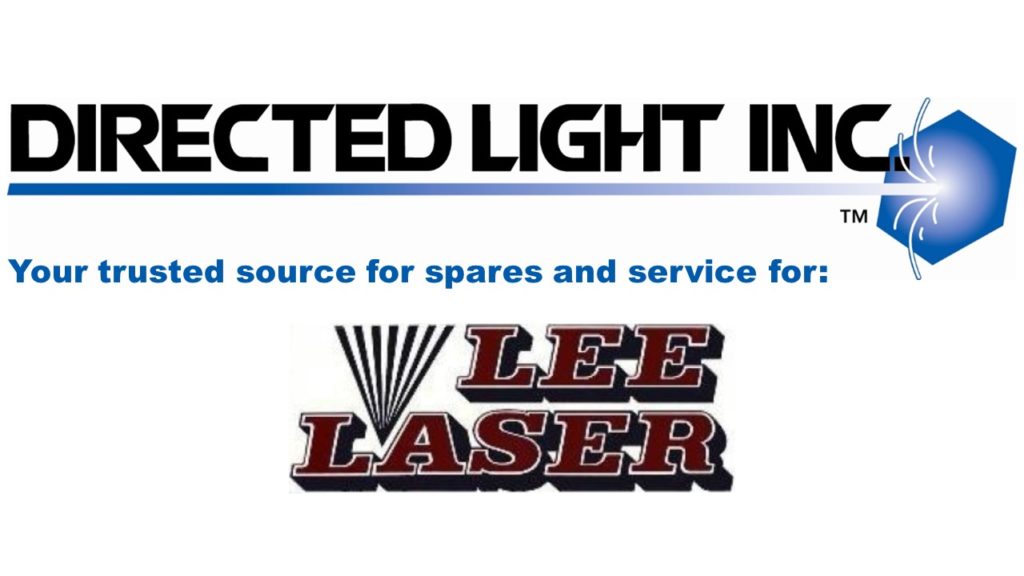
Lee Laser Incorporated was formed in 1984 as an OEM source for continuously-pumped and Q-switched Nd:YAG lasers for industry and science. Using the most reliable electronic and solid state laser technology at the time, the Company designed the popular Series 700 lasers to fill a market void created by existing products that had changed little over the previous 15 years.
Lee Laser offered a truly user-friendly product, highly reliable and fail-safe, simple to service, and compatible with both 220 VAC and 400 VAC, 3-phase prime power. Such a laser was highly valued by laser systems’ integrators having a worldwide customer base. Two early OEM customers, Chicago Laser Systems (thick-film hybrid microcircuit trimmers) and Spectra- Physics (ultra-short pulse lasers for spectroscopy) contributed to the visibility and recognition of Lee Laser as a manufacturer of high-quality and reliable industrial Nd:YAG lasers.
In 1992, Lee Laser introduced the Series 800 lasers as a design and performance upgrade of the Series 700 lasers. The Series 800 lasers were expanded to include TEMoo-mode models up to 25 Watts and multimode models up to 1,000 Watts. Active stabilization via closed-loop optical feedback became available for users requiring highly stable performance better than 1% peak-to-peak. The Company developed a variety of performance options for the Series 800 Lasers including fundamental and harmonic wavelength operation at 1.32 and 0.53 µm, as well as beam delivery and focusing optical accessories. Lee Laser developed expertise in OEM engineering to meet unique performance requirements or packaging criteria.
In 1995, the Series 800 lasers were qualified to meet the requirements of the Electromagnetic Compatibility (EMC) Directive and the Product Safety Directive (LVD), defined under European Community Directives 89/336/EEC and 73/23 EEC. During a rigorous battery of tests, the laser performed within the EMI/RFI emission limits specified for residential environments, and met the immunity requirements specified for heavy industrial environments.
In 1996, Lee Laser introduced high-power, frequency-doubled Nd:YAG lasers with output up to 50 Watts average power Q-switched at 10 kHz at 532-nm wavelength. As with other Series 800 lasers, these are industrial-grade machines that also exhibit excellent beam quality.
In 1996, Lee Laser moves into modern, 27,000 square-foot facility at 7605 Presidents Drive in Orlando, Florida.
In 1997, the company introduced the Series 600 Pulsed Nd:YAG Lasers for heavier-duty micromachining applications of precision cutting, drilling and welding. The Model 650M/CD has gained immediate popularity because of its superior speed and quality to cut thin metals.
In 1998, Lee Laser introduced the Series LDP, Diode-Pumped Nd:YAG Lasers, with output power up to 100 Watts at 1064nm and 50 Watts at 532nm. These lasers offer improved performance stability, mode quality, and electrical efficiency over conventional lamp-pumped Nd:YAG Lasers.
In May 1999, Lee Laser introduced three new laser products:
• 200-Watt Diode-Pumped CW Nd:YAG Laser, Model LDP-200MQ, for high-speed industrial marking applications
• 100-Watt Frequency-Doubled (532nm) Diode-Pumped Nd:YAG Laser, Model LDP-200MQG, for applications that include deep-hole drilling, particle image velocimetry(PIV) and display purposes.
• 10-Watt Frequency-Doubled (660nm) Lamp-Pumped Nd:YAG Laser, Model 8100MQR/L, for display purposes.
In August 1999, Lee Laser became an operating unit of Dover Corporation and functions as a division of DovaTech, Ltd.
In February 2000, Lee Laser adds 5,000 square feet of manufacturing space to accommodate their fast-growing laser business. Total facility now becomes 32,000 square feet.
In January 2001, Lee Laser adds another 5,000 square feet of manufacturing space. Total facility now becomes 37,000 square feet.
In September of 2004, Lee Laser became an operating unit of ROFIN-SINAR Technologies.
End-User Industries and Applications
Lee Laser’s Nd:YAG lasers had been applied and continue to be used in a variety of manufacturing applications. Among the most common are:
a. Marking and Engraving: Accounted for 75- 80 % of their laser sales with OEM customers in the U.S., Europe and Asia, that build laser marking systems. Laser marking systems are used in most every industry: automotive, electronic, computer, aerospace, consumer products and others. Our OEM customer base for marking systems serves this entire range of end-use industries. Nd:YAG lasers are used to mark a wide variety of materials. Most metal marking applications must be performed with a Nd:YAG laser.
b. Laser Trimming: Laser trimming means the calibration or adjustment of an electronic circuit to perform a particular function. Nd:YAG lasers are used to trim thick-film hybrid microcircuits that are used in automotive and computer electronics. They also are used for high-speed trimming of chip resistors for surface mount technology applications.
1. all laser models comfortably meet their rated output power specifications
2. at rated laser output beam power level, the user can expect long arc lamp lifetime which can exceed 1000 hours, and laser-diode lifetimes in the range 10,000-20,000 hours, when the laser is operated continuously.
c. Diamond Processing: Q-switched CW Nd:YAG laser can be used to cut gemstone diamonds. The laser may be used to cut large gemstones that present a definite hazard to the conventional cleaving technique. The laser also is used also to “kerf” a diamond in preparation for conventional cleaving. Although Belgium, Israel and South Africa have been the traditional centers for diamond processing, India has now surpassed these countries as sources for new laser business.
d. Thin Metal Cutting: There are two thin metal cutting applications for which the Lee Laser Model 650M/CD Pulsed Nd:YAG Laser is especially well suited:
1. medical stent devices: used in balloon angioplasty to prevent an expanded vein from eventual recollapse.
2. metal stencils for surface-mount resistor paste application: laser cutting is replacing other “dirty” technologies such as chemical etching.
e. Entertainment and Display: Lee Laser’s development of high-power visible lasers, up to 100 Watts of green laser light, attracted considerable attention in the entertainment and display industries. These lasers are more powerful and far more energy efficient than gas ion lasers that traditionally have been used for this purpose. The “industrial-grade” reliability of Lee Laser products is very attractive when compared with other products that are considered to be “laboratory lasers.”
